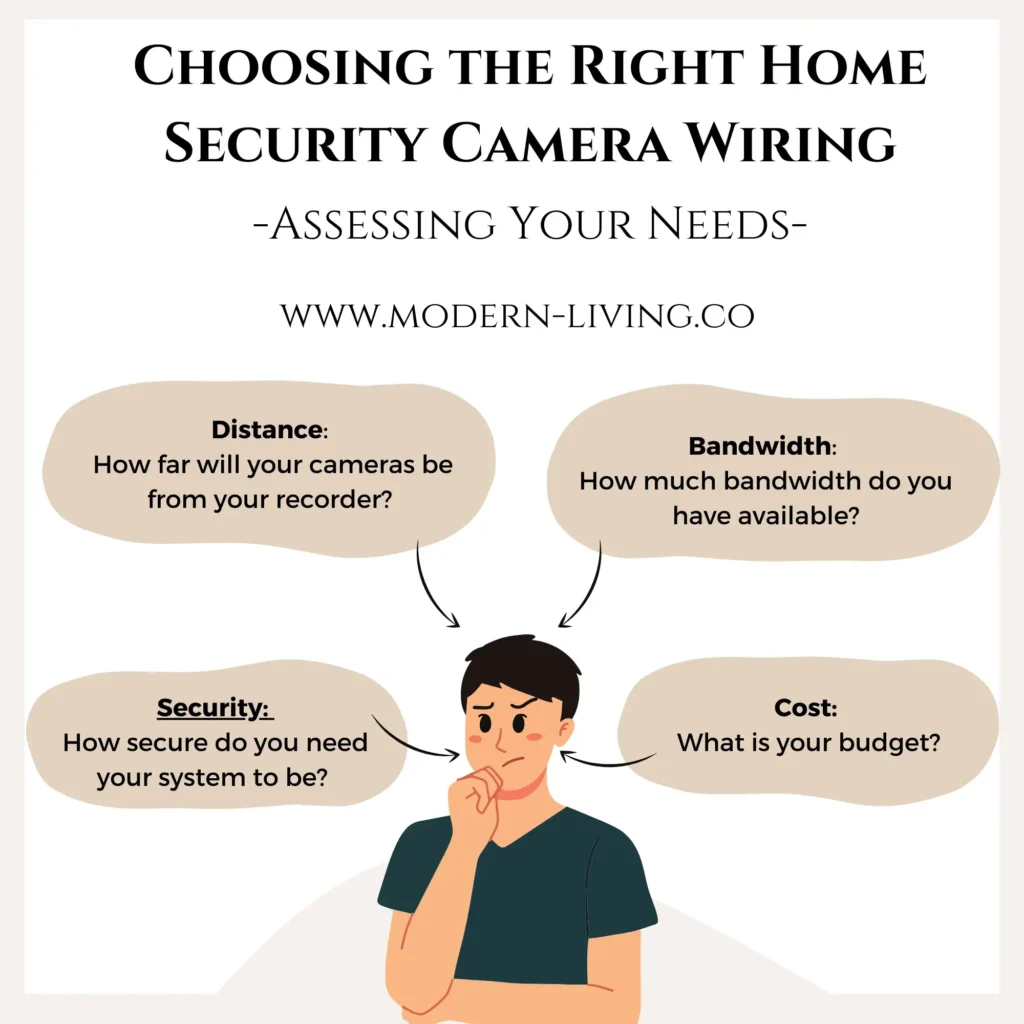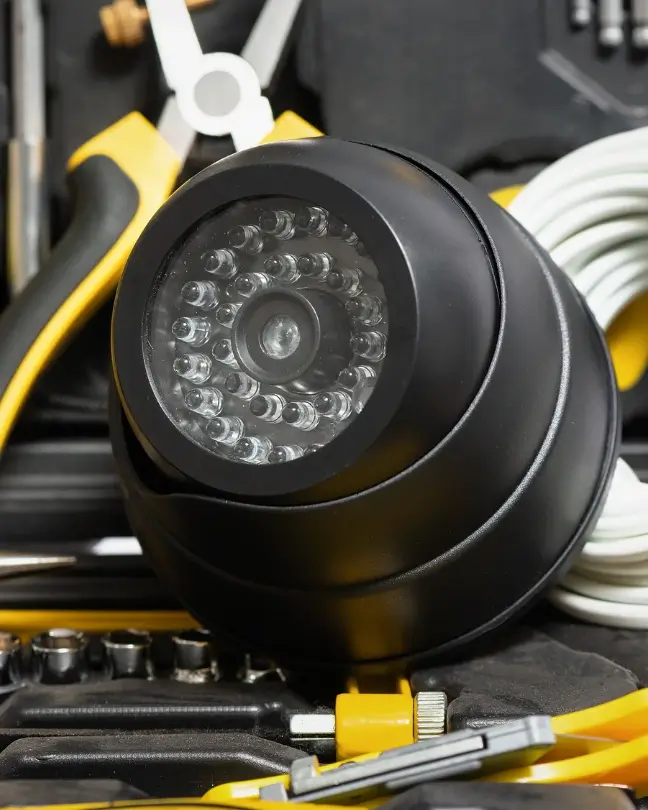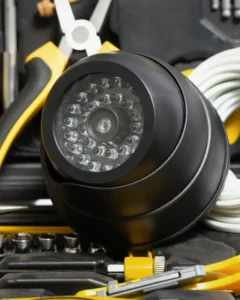Home security is a top priority for many homeowners, and installing security cameras is a great way to keep your property safe. However, setting up a security camera system can be a daunting task, especially when it comes to wiring. In this article, I will guide you through the process of home security camera wiring, including the different types of wiring and how to install them both indoors and outdoors.
There are two main types of security camera wiring: POE (Power over Ethernet) and wireless. POE cameras use a single cable to transmit both power and data, while wireless cameras use Wi-Fi to transmit data. Both types have their advantages and disadvantages, and the choice ultimately depends on your specific needs and preferences.
Understanding Home Security Camera Wiring
First and foremost, you need to decide whether you want to wire your cameras using a wired or wireless connection. Wired connections are more reliable and secure, but they can be more difficult to install. Wireless connections, on the other hand, are easier to install but can be less reliable and more vulnerable to interference.
If you decide to go with a wired connection, you will need to run cables from your cameras to your recording device or monitor. This can be done using either coaxial or Ethernet cables. Coaxial cables are thicker and more durable, but they are also more difficult to install. Ethernet cables, on the other hand, are thinner and easier to install, but they are not as durable as coaxial cables.
Once you have your cables in place, you will need to connect them to your cameras and recording device or monitor. This can be done using either BNC or RJ45 connectors. BNC connectors are typically used for coaxial cables, while RJ45 connectors are typically used for Ethernet cables.
It is also important to note that you may need to use a power source to power your cameras. This can be done using either a power over Ethernet (PoE) switch or a separate power supply.
Types of Home Security Camera Wiring
Wired
Wired security camera systems are the traditional option for home surveillance. They require a physical connection between the camera and the recording device, which is usually a digital video recorder (DVR) or network video recorder (NVR). The wires can be run through walls or ceilings, or they can be exposed and run along the surface of the wall.
The main advantage of wired systems is that they provide a reliable and stable connection, with no risk of interference or signal loss. They also tend to be more secure than wireless systems, since they can’t be hacked or jammed. However, installation can be more difficult and time-consuming, and the wires can be unsightly if not hidden properly.
Wireless
Wireless security camera systems use Wi-Fi or cellular networks to transmit video data to a recording device, which can be a computer, smartphone, or cloud-based service. They are easy to install and can be placed anywhere within range of the network.
The main advantage of wireless systems is that they are very flexible and can be easily moved or repositioned. They are also less expensive and easier to install than wired systems. However, they can be vulnerable to interference from other devices, and the signal can be weakened by walls or other obstacles.
Hybrid
Hybrid security camera systems combine the best of both worlds, with both wired and wireless components. For example, a hybrid system might use wired cameras for high-security areas and wireless cameras for more flexible locations.
The main advantage of hybrid systems is that they offer the flexibility of wireless systems with the reliability of wired systems. They can also be customized to meet specific security needs. However, they can be more expensive and complex to install than either wired or wireless systems alone.
Installation Process of Home Security Camera Wiring
Here’s a breakdown of the installation process of home security camera wiring.
Choosing the Right Location
Before you start running wires, you need to decide where you want to install your cameras. The security camera placement is one of the most important things. The ideal location will depend on what you’re trying to monitor. For example, if you’re trying to monitor the front of your property, you’ll want to install a camera above your front door or garage. If you’re trying to monitor your backyard, you might want to install a camera on the side of your house.
Running the Wires
Once you’ve decided on the location of your cameras, it’s time to start running the wires. There are two ways to do this: through the walls or along the outside of your home. Running wires through the walls is the most aesthetically pleasing option, but it can be difficult if you’re not familiar with electrical work. Running wires along the outside of your home is easier, but it can be unsightly.
Connecting the Camera
After you’ve run the wires, it’s time to connect the camera. This involves attaching the wires to the camera and then connecting the camera to your recording device. Most cameras come with detailed instructions, so be sure to follow them carefully.
Choosing the Right Home Security Camera Wiring

Assessing Your Needs
Before you choose a wiring type, it’s important to assess your needs. Consider the following factors:
- Distance: How far will your cameras be from your recorder? POE cameras can typically be placed up to 100 meters away from the recorder, while wireless cameras have a limited range.
- Bandwidth: How much bandwidth do you have available? POE cameras can use more bandwidth than wireless cameras, but they also provide higher resolution video.
- Security: How secure do you need your system to be? POE cameras are generally more secure than wireless cameras, as they are physically connected to the recorder.
- Cost: What is your budget? POE cameras are typically more expensive than wireless cameras, but they also provide higher quality video.
Comparing Different Types
Once you’ve assessed your needs, it’s time to compare different types of home security camera wiring. Here are the main differences between POE and wireless:
| Wiring Type | Pros | Cons |
|---|---|---|
| POE | Higher quality video, more secure | More expensive, requires professional installation |
| Wireless | Easier to install, less expensive | Lower quality video, limited range |
In general, if you need high quality video and security, POE is the way to go. If you’re on a budget or need to install cameras in hard-to-reach areas, wireless may be a better option.
Maintenance of Home Security Camera Wiring

Routine Checks
Performing routine checks on your home security camera wiring is important in ensuring that your cameras are working effectively. Here are some checks you should perform regularly:
- Check for loose connections: Ensure that all connections are secure and tight. Loose connections can cause the cameras to lose power or signal, which can compromise the security of your home.
- Check for damaged cables: Check the cables for any signs of damage, such as cuts or tears. Damaged cables can cause interference or signal loss, which can affect the quality of the video footage.
- Check for pests: Pests such as rodents can chew through the cables, causing damage and signal loss. Ensure that the cables are protected from pests by using conduit or other protective measures.
Troubleshooting Common Issues
Even with proper maintenance, home security camera wiring can still encounter issues. Here are some common issues and troubleshooting tips:
- No power: If the cameras are not receiving power, check the power source and ensure that the cables are properly connected. If the issue persists, the power supply may need to be replaced.
- Poor quality footage: If the video footage is poor, check the cables for damage or interference. Ensure that the cameras are properly focused and positioned for optimal coverage.
- Signal loss: If the cameras are experiencing signal loss, check for loose connections or damaged cables. Interference from other devices can also cause signal loss, so ensure that the cameras are not placed near other electronic devices.
FAQ
How hard is it to install a wired security camera system?
Installing a wired security camera system can be complicated and time-consuming, especially if you need to run cables to each camera location. However, most security camera systems come with detailed instructions and installation guides that can help you set up your system properly.
Are wired cameras harder to hack?
Wired cameras are generally considered harder to hack than wireless cameras, as they are not vulnerable to wireless network attacks. However, wired cameras can still be hacked if they have internet connectivity or if there is insecure access to a local network.
Is it better to have wired or wireless security cameras?
Choosing between wired and wireless security cameras depends on your specific needs and preferences. Wired cameras offer better reliability and image quality, while wireless cameras offer more flexibility and easier installation. Consider factors such as cost, range, and security when deciding which type of camera to choose.
If you liked this blog article about the topic: Home Security Camera Wiring, don’t forget to leave us a comment down below to tell us about your experience.
Feel free to also check out our other Articles from the category “Home Networking“



